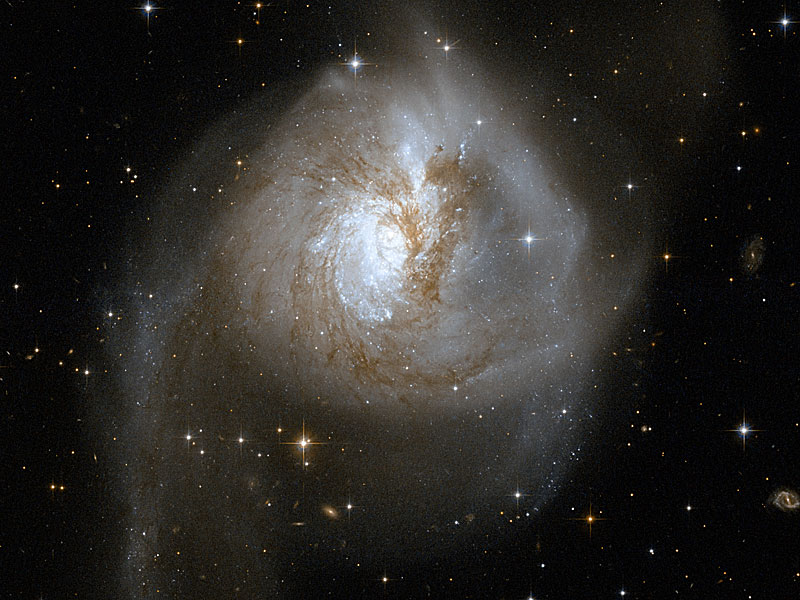Credit & Copyright: NASA,
ESA,
Hubble Heritage
(STScI /
AURA) -
ESA/Hubble Collaboration, &
A. Evans (UVa,
NRAO,
SUNYSB)
Explanation:
Galaxies don't normally look like this.
NGC 3256
actually shows a current picture of two galaxies that are slowly
colliding.
Quite possibly, in hundreds of millions of years, only one galaxy will remain.
Today, however,
NGC 3256
shows intricate filaments of dark dust, unusual
tidal tails of stars, and a
peculiar center that contains two distinct nuclei.
Although it is likely that no stars in the two
galaxies will directly collide,
the gas, dust, and ambient magnetic fields do interact directly.
NGC 3256,
part of the vast
Hydra-Centaurus
supercluster of galaxies, spans over 100 thousand
light-years
across and is located about 100 million light-years away.
digg_url = 'http://apod.nasa.gov/apod/ap080506.html'; digg_skin = 'compact';
1999 2000 2001 2002 2003 2004 2005 2006 2007 2008 2009 2010 2011 2012 2013 2014 2015 2016 2017 2018 2019 2020 2021 2022 2023 2024 2025 |
Январь Февраль Март Апрель Май Июнь Июль Август Сентябрь Октябрь Ноябрь Декабрь |
NASA Web Site Statements, Warnings, and Disclaimers
NASA Official: Jay Norris. Specific rights apply.
A service of: LHEA at NASA / GSFC
& Michigan Tech. U.
|
Публикации с ключевыми словами:
galactic collision - сталкивающиеся галактики
Публикации со словами: galactic collision - сталкивающиеся галактики | |
См. также:
Все публикации на ту же тему >> | |
